Zim makes giant strides in cancer data collection
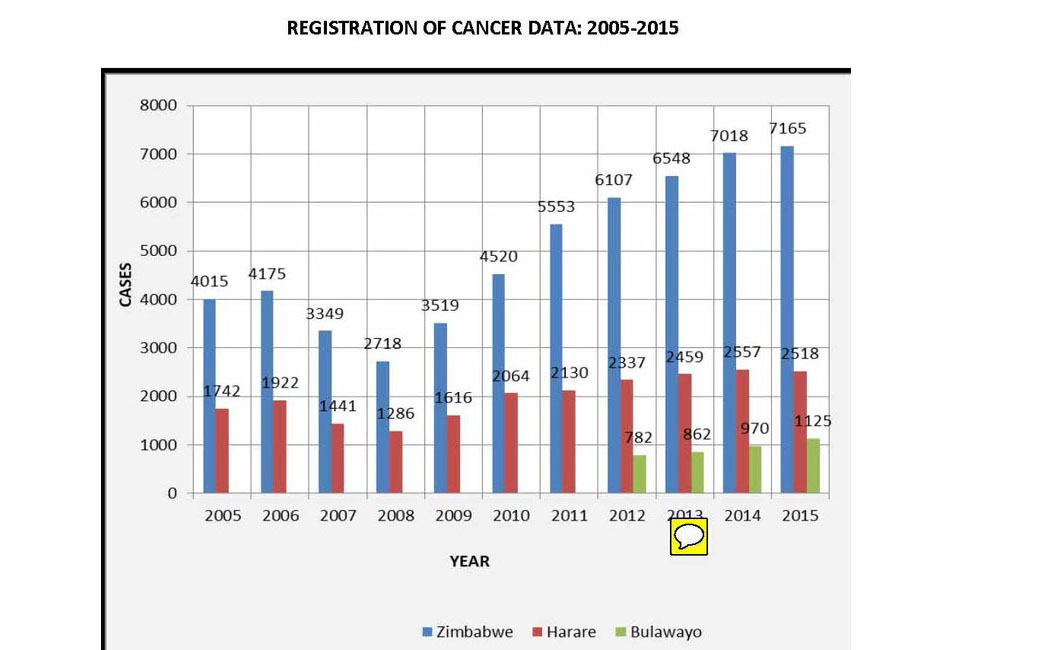
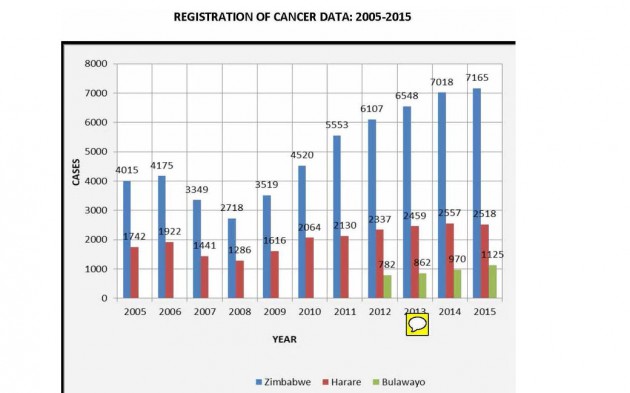 Sifelani Tsiko Senior Writer
Sifelani Tsiko Senior Writer
Zimbabwe has made huge strides in improving the collection of information of all new cancer cases helping to increase surveillance and the implementation cancer programmes in the country. The Zimbabwe National Cancer Registry (ZNCR), in its latest 2015 report, indicated that it had stepped up the collection of up-to-date information on the burden of cancer in the country in line with the country’s national cancer prevention and control strategies.
“The ZNCR is pleased to publish the annual report for 2015 less than a year after the release of the 2014 report. This is consistent with its objective of providing reliable and up-to-date information on the incidence and pattern of cancer occurrence in Zimbabwe, especially for the country’s national cancer prevention and control plans. The movement towards achieving complete coverage for the country is ongoing, and was further accelerated in 2015 with registration of a record number of cancer cases,” said Prof Margaret Borok, medical director of the registry in the report.
The 2015 report indicates a rise in the current level of use of the ZNCR database as evidenced by increased requests for data.
“The data are extensively utilised by indigenous and international researchers, conference participants, lecturers, students, health educators and policy makers for management planning and cancer control programmes. In recent times, the ZNCR has become increasingly involved in national cancer prevention and control issues and activities,” Prof Borok wrote in the report.
Furthermore, data from the ZNCR has been accepted for publication in two prestigious international monographs on cancer incidence to be published by the World Health Organisation and the International Association of Cancer registries (IARC). Data on childhood cancer will also be published in the upcoming third edition of the “International Incidence of Childhood Cancer” (IICC-III) for the second consecutive period. The ZNCR will also contribute data to volume 11 of the “Cancer Incidence in five Continents” monographs (CI5-XI) for a record fifth successive time.
“These are no mean achievements which clearly testify to the high quality data generated by the registry,” the cancer registry said.
In addition to this, the ZNCR also published two papers in high impact peer reviewed cancer journals during the year under review. National coverage for cancer cases has improved significantly with the Bulawayo branch of the ZNCR providing data for the first time. This enhanced the quality of data captured by the registry and contributed to the national database. Cancer cases and deaths continue to rise in Zimbabwe with the latest report released by the ZNCR showing that 7 165 new cases were recorded in 2015 compared to 7 018 cases were recorded in 2014.
Of the recorded cases, 2 651 lives were lost to the chronic disease compared to 2 474 in 2014. A total of 111 children died from cancer in 2015 while in the previous year about 126 children succumbed to the disease. Cervical cancer remained the lead cancer followed by prostate, breast cancer, Kaposi sarcoma, non-Hodgkin lymphoma, non-melanoma skin cancer, oesophagus and colo-rectal in that order.
“A total of 2 651 cancer deaths comprising 1 276 (48,1 percent) males and 1 375 (51,9 percent) females were recorded in Harare, Chitungwiza and Bulawayo in 2015,” according to the report which was released last week.
The leading causes of cancer deaths among children included leukaemia, lymphoma, tumours of the brain, renal tumours, nervous system, eye, soft tissue tumours and bone tumours. The other cancers constituted 16 percent of the deaths. Cancer cases have been rising steadily over the years in Zimbabwe. In 2013, about 6 548 cases were recorded resulting in the death of about 1 700 people.
Of the new 7 165 cancer cases recorded among Zimbabweans of all races in 2015, males comprised 3 041 (42,4 percent) and females were 4 124 (57,6 percent). According to the latest available figures, the most frequently occurring cancers among Zimbabweans of all races in 2015 were cervix uteri (19 percent), prostate (9 percent), breast (7 percent), Kaposi sarcoma (KS) (7 percent), non-melanoma skin cancer (NMSC) (6 percent), non-Hodgkin lymphoma (NHL) (6 percent), oesophagus (5 percent), colo-rectal (4 percent) and stomach (3 percent).
The other cancers accounted for 34 percent of the registered malignancies. The leading causes of cancer among Zimbabwean black men in 2015 were prostate cancer (22,5 percent), followed by KS (10,8 percent), NHL (7,9 percent), oesophagus (6,9 percent), liver (5,1 percent), stomach (3,9 percent), NMSC (3,6 percent), lung (3, 5 percent), colon (2,9 percent) and eye (2,6 percent). Cervix cancer was the commonest malignancy in Zimbabwean black women (34,8 percent). This was followed by breast (11,6 percent), NHL (4,7 percent), KS (4,6 percent), oesophagus (4,6 percent), stomach (3,3 percent), NMSC (2,8 percent) ovary (2,6 percent), eye (2,4 percent) and liver (2,1 percent).
In 2015, non-melanoma skin cancer was the most predominant cancer among Zimbabwean non-black men (46,5 percent) followed by prostate cancer (10,0 percent), colon (6,7 percent), melanoma skin cancer (MSC) (4,5 percent), lung (3,3 percent), rectum (3,3 percent), bladder (3 ,0 percent), non-Hodgkin lymphoma (2,6 percent), oesophagus (2,2 percent) and pancreas (1,5 percent). The leading cancers in non-black Zimbabwean women were NMSC (38,2 percent), breast (15,9 percent), colon (4,5 percent), lung (4,1 percent), melanoma skin cancer (MSC) (4,1 percent), ovary (3,6 percent), cervix uteri (3,6 percent), NHL (3,6 percent), vulva (2,7 percent) and rectum (2,3 percent). The mean ages of cancer patients diagnosed among Zimbabweans of all races in 2015 were 56,8 for males and 52,8 for females respectively, according to the 2015 report.
“As in other countries in the developing world, the majority of cancers in Zimbabwe are related to infections such as HPV (cervical cancer), HHV8 (Kaposi sarcoma) and EBV (non-Hodgkin lymphoma). All these viral infections are potentiated by the HIV virus. In addition Hepatitis B and C are associated with primary liver cancer and schistosomiasis with bladder cancer. As in other developing countries lifestyle changes, diet and other factors are also contributing to the increasing occurrence of cancer in Zimbabwe,” said Mr Eric Chokunonga, the registrar of the ZNCR.
Africa and most other developing countries continue to record high cancer deaths because the disease is often not detected and diagnosed early enough due to a lack of screening and access to treatment. Cervical cancer, for example, kills hundreds of thousands of women in Africa each year but can be largely avoided with a vaccine or successfully treated if it is detected early enough.
In Zimbabwe, cancer is now the second biggest killer disease after HIV and official health figures indicate that the disease is killing more 1 500 every year. Out of this figure, 80 percent of the victims visit health institutions late for treatment when the disease is already at an advanced stage. Oncologists in Zimbabwe attributed this to either poverty or lack of knowledge about the disease. According to new WHO figures (2015) released this year, some 8,8 million people died from cancer, of which approximately two thirds occurred in low — and middle-income countries.
In addition, each year, over 14 million people are diagnosed with cancer and the WHO says this figure is projected to rise to over 21 million by 2030 if nothing is done. Dr David Okello. WHO Representative in Zimbabwe says supportive care is essential for comprehensive cancer control as well as providing access to pain relief.
“The WHO recommends reducing the need for people with cancer to pay for care out of their own pockets, which remains a major barrier for many in seeking care in the first place, as part of the solution,” he said in a report.
Zimbabwe offers cancer health care services at two major referral hospitals — Parirenyatwa and Mpilo. These institutions still lack formal accommodation for patients seeking services. Health experts say limited availability of resources, including chemotherapy medicines, other essential cancer drugs and lack of skilled health experts have greatly compromised patient care in the country.
“Moreover, although most paediatric tumours are potentially curable, there are limitations in diagnosis and treatment, leading to poor outcomes. Be that as it may, the emphasis for the country should be to promote early diagnosis and there is need for resources to ensure effective and people-centred diagnosis,” noted Dr Okello.
Cancer experts say Africa needs to scale up strategies for tackling cancer by increasing the number of health care personnel, providing more equipment for cancer care and modernising cancer treatment and care to meet global standards.

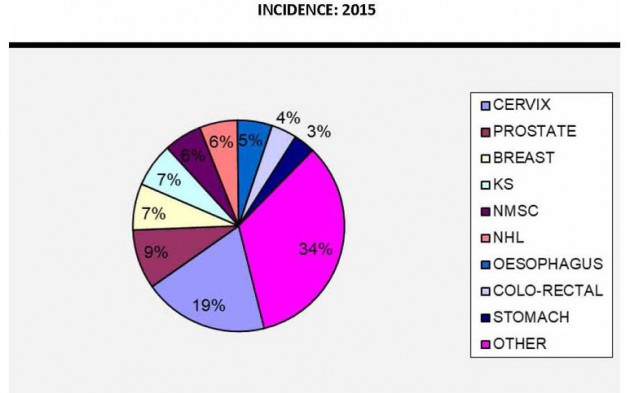
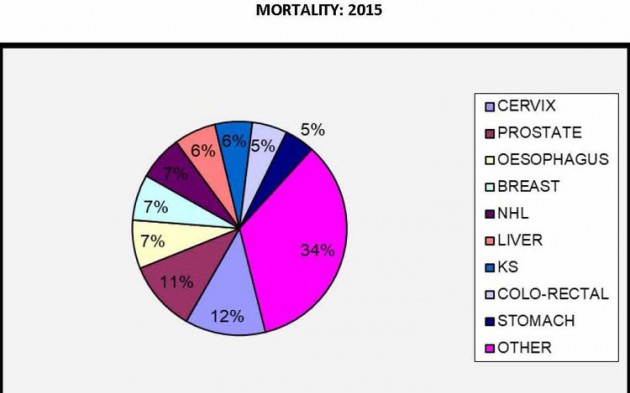

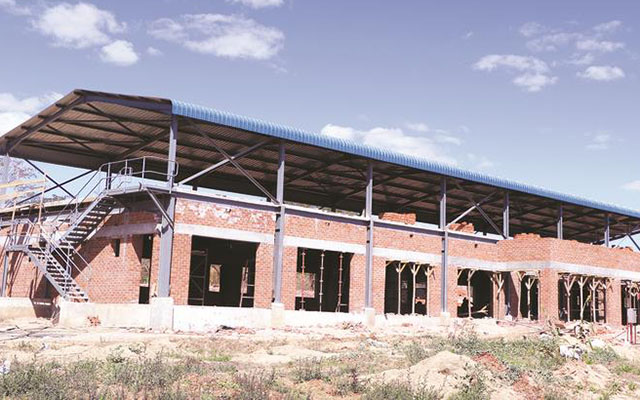




Comments